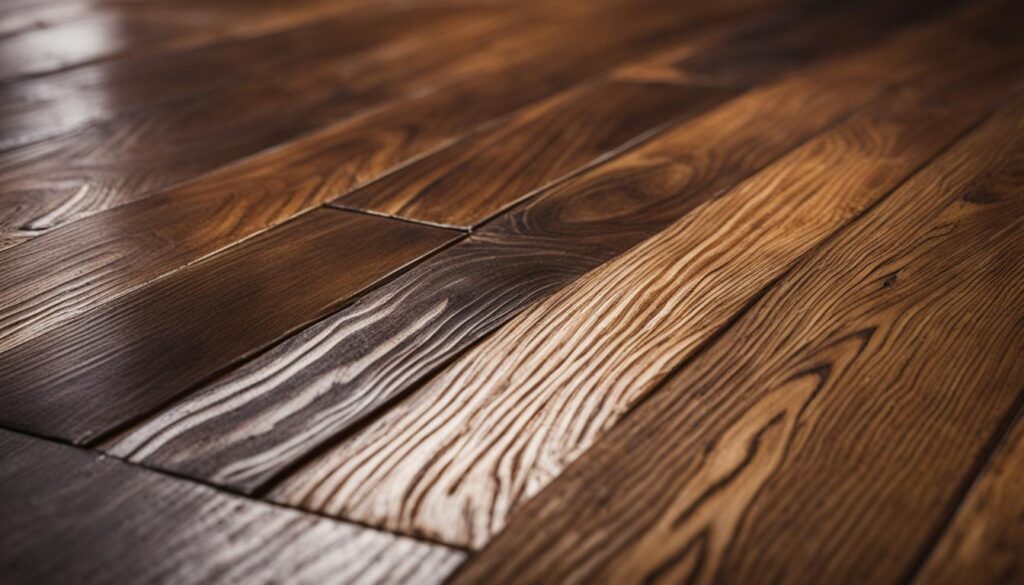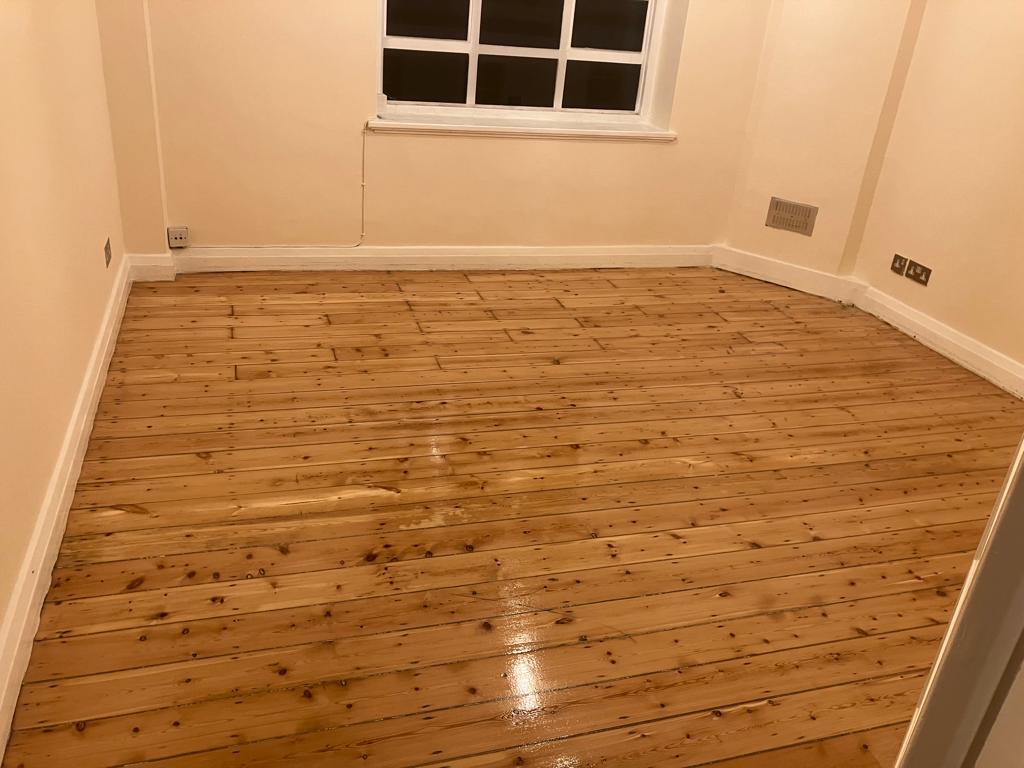If you’re lucky enough to have beautiful hardwood floors in your home or office, you’ll know that they can add a touch of elegance and warmth to any space. However, over time, even the most durable wooden floors can become worn, scratched, and dull, detracting from their natural beauty and resilience. The good news? With the right techniques, products, and care, you can restore your wooden floors to their former glory and enjoy them for years to come.
Key Takeaways
- Wooden floors can last for decades with proper maintenance and care.
- Restoring wooden floors to their original lustre requires specialized techniques and products.
- Regular cleaning and maintenance can prevent wear and tear and extend the life of your floors.
- Professional floor sanding and polishing can remove scratches, stains, and other imperfections.
- Choosing the right cleaning products is crucial to maintaining the natural beauty of your wood floors.
The Process of Floor Sanding and Polishing
Wooden floors are a long-lasting and beautiful addition to any home, but over time, they can become worn, scratched or stained. Floor sanding and polishing are essential steps in restoring the natural beauty of the wood and giving your floors a fresh, new look.
Sanding involves removing the existing finish, smoothing out any rough areas, and preparing the surface for a new coat of polish or varnish. Polishing, on the other hand, involves adding a protective layer of wax or oil to enhance the shine and improve durability.
Here are the steps involved in sanding and polishing:
Step 1: Preparation
Start by preparing the room and protecting any furniture or fixtures that cannot be removed. Use a vacuum cleaner to remove all dust and debris from the floor surface. Inspect the floor for any damage, such as splits or cracks, and make repairs where necessary.
Step 2: Sanding
The sanding process involves using a floor sander to remove the existing finish, such as paint or varnish, from the surface of the floor. Start with a coarse grit sandpaper and gradually work your way up to a finer grit to achieve a smooth finish.
Step 3: Staining (if desired)
If you want to change the color of your floor, you can apply a stain at this stage. Stains come in a range of colors and are applied with a brush or rag. Make sure to follow the manufacturer’s instructions and test the color on a small area of the floor first to ensure it is the desired shade.
Step 4: Polishing
After sanding and/or staining, it’s time to polish the floor. Apply a thin layer of oil or wax, using a buffing machine or mop, and allow it to dry completely before adding additional layers. Multiple coats may be needed to achieve the desired gloss or shine.
It’s important to note that sanding and polishing should only be done when absolutely necessary, as they can take a toll on the floor’s lifespan. However, when carried out correctly and with care, these processes can add years to the life of your hardwood floors.
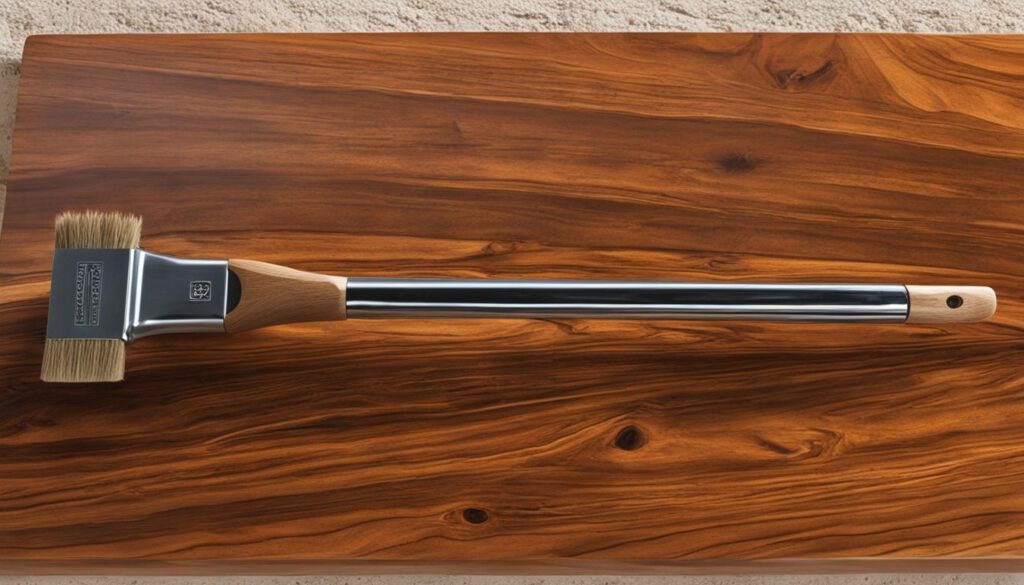
Essential Floor Maintenance and Repair Tips
Wooden floors bring warmth and character to any room, but maintaining their shine and good condition requires regular upkeep. Here are some essential tips and advice to keep your flooring in top shape:
- Protect your wooden floors from scratches and dents: Use felt pads under furniture legs and avoid walking on the floors with high heels or heavy shoes.
- Regularly clean your floors: Use a soft-bristled broom or a vacuum cleaner with a hardwood floor attachment to clean up dust and debris. Avoid using wet mops or cleaning solutions that contain harsh chemicals.
- Address spills as quickly as possible: Use a clean, dry cloth to wipe up any spills immediately to prevent the wood from absorbing moisture.
- Rejuvenate your floors: Over time, your wooden floors may lose their shine and require rejuvenation. Floor rejuvenation involves sanding, polishing, and refinishing. This process can help to eliminate surface scratches and stains and restore the natural beauty of your flooring.
- Repairing damaged wooden floors: Sometimes, despite your best efforts, wooden floors can become damaged. Minor scratches and dents can be repaired using wood putty, but larger damages may require professional repairs.
| Issue | Solution |
|---|---|
| Scratches on the surface | Use a wax stick or wood putty to fill in the scratch and then buff the area with a soft cloth. |
| Stains on the floor | Apply a floor cleaner specially designed for your type of flooring and follow the instructions carefully. You can also use homemade solutions such as vinegar and water or baking soda and warm water. |
| Creaking or loose floorboards | Loose floorboards can be fixed by applying glue to the joists and then reattaching the boards. For creaking floors, you can sprinkle talcum powder over the area and vacuum up the excess powder. |
Regular maintenance and repair of your wooden floors can extend their lifespan and keep them looking their best. Follow these tips, and you’ll enjoy the warmth and beauty of your wooden floors for years to come.
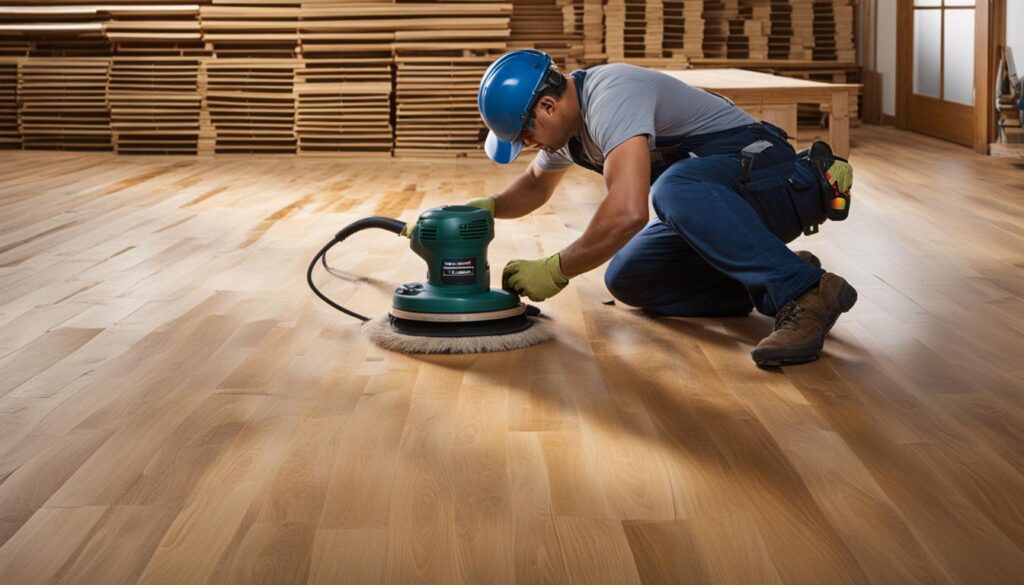
Choosing the Right Products for Floor Cleaning
When it comes to cleaning your wooden floors, choosing the right products is essential for both their longevity and appearance. Using harsh chemicals or improper techniques can cause lasting damage to your floors, reducing their natural beauty and leading to expensive repairs. Here are some tips to help you choose the right products for effective and safe floor cleaning:
- Consider the type of wood: Different types of wood have unique characteristics that can impact the effectiveness of cleaning products. Make sure you research the specific type of wood that your floor is made of before purchasing any cleaning products.
- Avoid abrasive cleaners: Abrasive cleaners can scratch and damage your wooden floors, leaving them looking dull and worn out. Instead, use gentle, non-abrasive solutions that won’t harm the wood surface.
- Choose pH-neutral cleaners: Solutions with high pH levels can cause discolouration and damage to your floors. Opt for pH-neutral cleaners that are gentle on wood and won’t cause any harm or discoloration.
- Look for eco-friendly options: Using eco-friendly cleaning products is not only good for the environment but also for your floors. Eco-friendly cleaners are generally safer for use on hardwood floors, as they contain fewer harsh chemicals.
Proper floor cleaning is essential for maintaining the beauty and longevity of your wooden floors. Take time to consider the type of wood you have and choose the right cleaning products that will help protect your floors, so they look great for years to come.
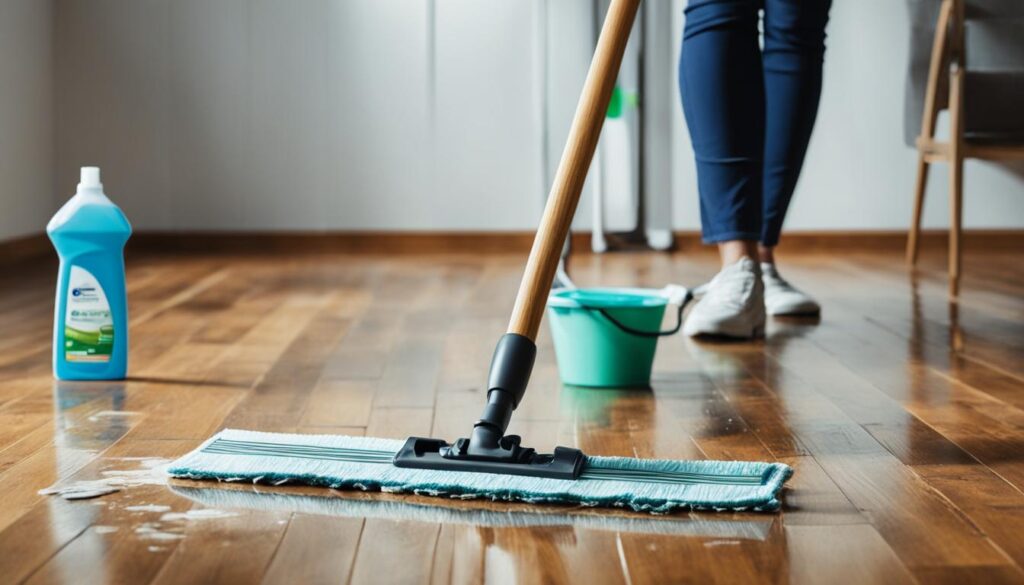
Top Floor Cleaning Products for Wooden Floors
| Product Name | Description | Price |
|---|---|---|
| Bona Hardwood Floor Cleaner | A pH-neutral, non-toxic cleaner that effectively removes dirt and grime from hardwood floors without damaging the surface. | £15.99 (946mL) |
| Black Diamond Wood and Laminate Floor Cleaner | A gentle and safe cleaner that is perfect for use on wooden floors, laminate, and engineered hardwood. It does not leave any streaks or residue behind. | £9.50 (946mL) |
| Pledge Gentle Wood Floor Cleaner | A mild and effective cleaner that gently cleans wood floors without leaving any dull residue behind. | £6.00 (750mL) |
| Astonish Wood Floor Cleaner | A pH-neutral and plant-based cleaner that effectively removes dirt and grime while being gentle to the wood surface. | £3.00 (1L) |
Using the wrong products or techniques to clean your wooden floors can lead to significant damage in the long run. Always do your research and choose high-quality, safe, and effective cleaning products to ensure that your floors stay in great shape for years to come.
Conclusion
We hope that our guide has provided you with valuable insights into the challenges and best practices for wooden floor revitalisation. By following the tips and techniques outlined in this article, you can preserve the timeless charm of your hardwood floors for years to come.
Remember that proper floor restoration requires more than just a quick fix. It takes patience, skill, and attention to detail to achieve a flawless result. Whether you’re sanding and polishing, repairing scratches and dents, or cleaning your floors, make sure you take the time and care to get it right.
Investing in the maintenance and rejuvenation of your wooden floors not only enhances the aesthetic appeal of your home but also adds value to your property. So, whether you’re a homeowner looking to refresh your floors or a business owner seeking to revitalise your commercial space, it’s worth the effort to keep your wooden floors in top condition.
Thank you for reading our guide to Wooden Floor Revitalisation, which covers topics from floor restoration, wood floor refinishing, floor sanding, floor polishing, floor maintenance, floor rejuvenation, hardwood floor care, floor cleaning, to floor repair. Remember, with the right care and attention, your beautiful hardwood floors will continue to shine for many years to come.
FAQ
How often should I revitalize my wooden floors?
The frequency of floor revitalization depends on various factors such as the amount of foot traffic, the type of finish, and the condition of the floor. As a general rule, it is recommended to revitalize hardwood floors every 3 to 5 years to maintain their beauty and durability.
What is involved in the process of floor sanding and polishing?
Floor sanding and polishing involve several steps. First, the floor surface is thoroughly cleaned and any necessary repairs are made. Then, the floor is sanded using a professional-grade sanding machine to remove the old finish and smooth out imperfections. After sanding, the floor is polished with a high-quality polish to achieve a glossy and protective surface.
How can I maintain and repair my wooden floors?
Regular maintenance is key to preserving the beauty of wooden floors. It is important to sweep or vacuum the floor regularly to remove dust and dirt that can cause scratches. Additionally, placing rugs or mats in high-traffic areas can help protect the floor from wear and tear. To repair minor scratches, you can use a touch-up kit or fill them with wood putty. For deeper scratches or dents, it is advisable to seek professional repair services.
What products should I use for cleaning my wooden floors?
When cleaning your wooden floors, it is essential to use the right products to avoid damage. Avoid using harsh chemicals or abrasive cleaners, as they can strip away the finish or scratch the wood. Instead, opt for pH-neutral cleaners specifically designed for wood floors. Always follow the manufacturer’s instructions and test any new products in a small, inconspicuous area before applying them to the entire floor.
Is it possible to DIY wooden floor revitalization, or should I hire professionals?
While DIY floor revitalization is possible, it can be a time-consuming and labor-intensive process, requiring specialized equipment and knowledge. Hiring professionals ensures a high-quality result and saves you the hassle of DIY mistakes. Professionals have the expertise to identify and address specific floor issues and are equipped with the necessary tools and products to achieve optimal results.
